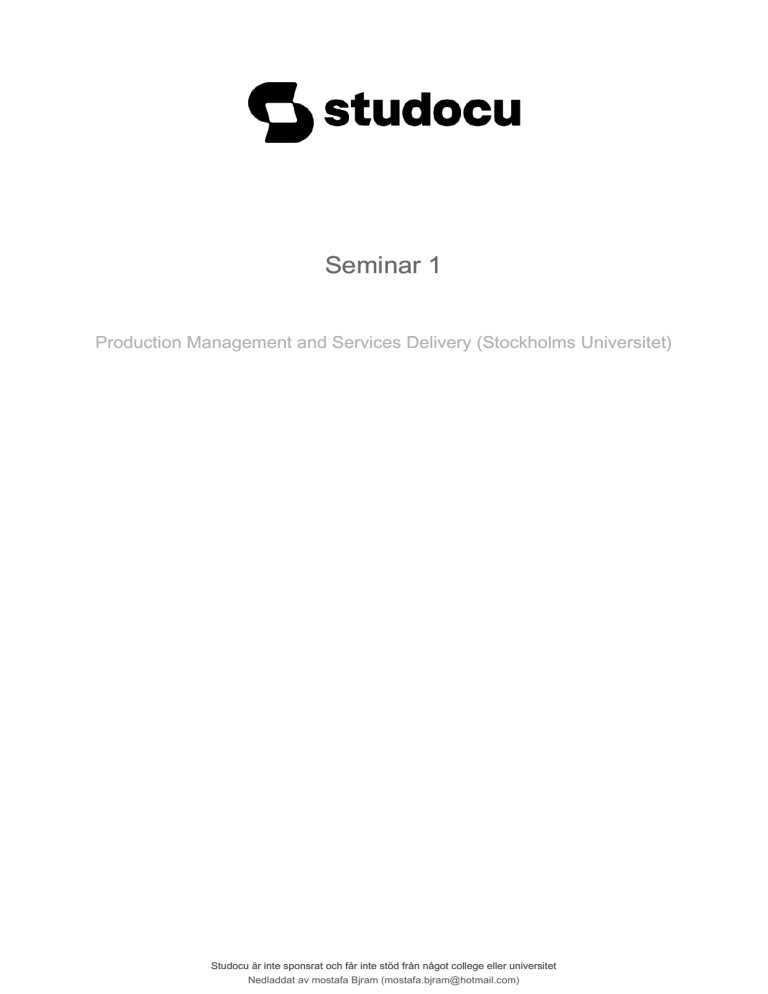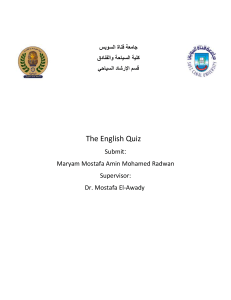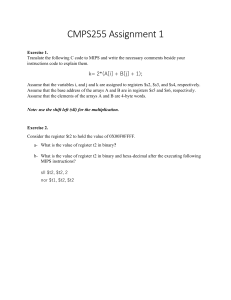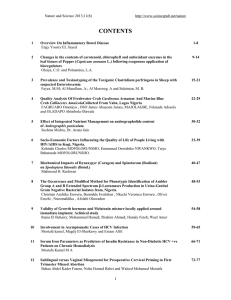
lOMoARcPSD|29391360 Seminar 1 Production Management and Services Delivery (Stockholms Universitet) Studocu är inte sponsrat och får inte stöd från något college eller universitet Nedladdat av mostafa Bjram (mostafa.bjram@hotmail.com) lOMoARcPSD|29391360 Seminar 1 1. Please compare and describe the 3B orthopaedics model and the typical procedures performed by the faculty practice surgeons with reference to the following terms that you find in your textbook, lecture notes and the above mentioned articles: 4Vs, performance objectives, structural and infra-structural decision areas, performance frontiers, trade-offs, process types. Do you find other terms or concepts in the course literature useful as well? The faculty perform procedures within different subspecialties. Within some subspecialties, the procedure doesn’t seem to vary too much, whilst others vary significantly. This means that there is not only a specific procedure that is done, but rather many. Formal responsibilities for e.g. teaching. 3B rented office space in another building owned by the hospital, which means they have no formal responsibilities. They only specialise in one area (subspecialty) within 0rtho. All the seven surgeons seem to specialise in a specific procedure. Junior surgeons performed a procedure outside their immediate area of specialization. By standardizing the procedures the surgeons have the possibility to reduce the time the surgery takes, and hence increase the speed. This is believed to example reduce to risk for complication and have improved medical outcomes, which in turn means better quality in providing the service. However, since the work is so standardized, 3B organize the organisation to not need to be flexible. Dependability is higher within 3B, and the faculty therefore has less dependability in comparison with 3B. To minimize the tools used under a procedure and to order the material from a specific supplier helps to reduce costs. Performance objective Standardize work within 3B means possibility to operate more patients (high volume), well-defined and standardized procedures (low variety), possibility to manage and plan activities/procedure in advance (low variation). On the other hand, I find that the faculty tend to treat less patients (lower volume), have different procedures to perform (high variety), not the same possibility to plan in advance since more services are offered (high variation). Visibility seems to be high within both, but somewhat lower within the faculty. You had more contact with the doctor. Trade offs basically means that as much as we like, we can’t have everything. Sacrifice one to get the other. 3B might not be able to help all the patients, since they only perform one specific procedure, however they can help a lot of people within one specific area. And vice versa for the faculty. Structural elements are found foremost in the decisions that 3B has made regarding the setup of the procedures and which resources to allocate, whilst infrastructural rather focus on what happens during the procedures, where one procedure is standardize, the use of same tools and supplies. Nedladdat av mostafa Bjram (mostafa.bjram@hotmail.com) lOMoARcPSD|29391360 Structural decisions primarily influence the physical arrangement and configuration of the operation’s resources. Infrastructural decisions influence the activities that take place within the operation’s structure. Within 3b it seems to be mores structured and efficient, whilst in the faculty it seems to be more free based. Efficient frontiers Lower variation - more cost efficient. Higher variation, not so cost efficient. 2. Which is better of the two models? What are the key criteria for your assessment? When looking at which model is better, my key criteria were to look at the models from an organizational type of view. With that I mean that I looked at which would benefit the hospital the most. Based on that I believe that the 3B model sounds very effective, where you have standardized procedures that don’t vary, the material and tools for the orthopedical procedures and the same supplier for all operations. I used the 4V and the five structural objectives, and found that 3b have the most positive aspects and outcomes. Of course many positive aspects can also be considered negative in a different light. I found that the 3B approach looks to be more efficient for the hospital. Visibility is a part that can be adapted by the faculty. 3b has come more far in the development. 3. How is Stockholm County Council (SLL/Region Stockholm) trying to implement the concept of focus in healthcare (see eg Dabhilkar and Svarts, 2019)? What similarities and differences to you find when you compare the two cases (SLL and Rittenhouse Medical Center)? SLL is trying to implement the concept of focus in healthcare by forming three new configurations of specialy hospitals, NKS - highly speciality care unit, Sabbatsberg - elective care units, and Danderyd - emergency care units for secondary care. This is similar to the 3B model since the idea is to have a more focused practice, where resources are assigned to perform a specific procedure or in the SLL case procedures within a specific area. This is also a difference between the cases, even though they have their “niche”, SLL is more broad. Low degree of which patients they treat, 3b chooses the patients. Focus provides higher quality and efficiency. Operations strategy på SLL – mer mot operation management på 3b. Nedladdat av mostafa Bjram (mostafa.bjram@hotmail.com)





